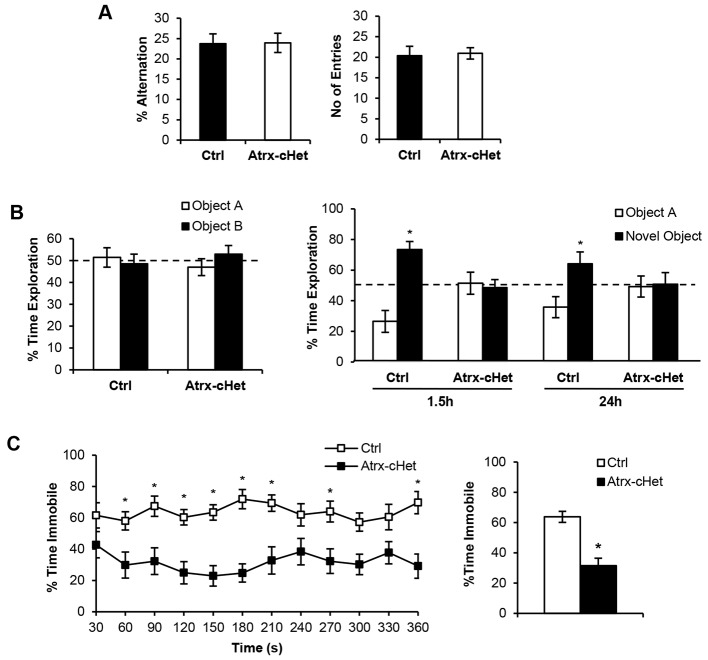Fig. 4.
Impaired novel object recognition and contextual fear memory in Atrx-cHet mice. (A) Percentage alternation and number of arm entries in the Y-maze test by control (n=14) and Atrx-cHet (n=15) female mice. (B) Control (n=14) and Atrx-cHet (n=14) mice displayed similar preference for identical objects in the training session of the novel object recognition task. The Atrx-cHet mice failed to display a preference for the novel object 1.5 and 24 h later (*P<0.05). (C) Atrx-cHet (n=14) mice spent less time immobile than control mice (n=14) in the fear-conditioning paradigm. The total percentage of time spent immobile is shown on the right (*P<0.0001). Statistical analyses made use of Student's two-tailed, unpaired t-test or two-way ANOVA; data are represented as means±s.e.m. and *P<0.05.

